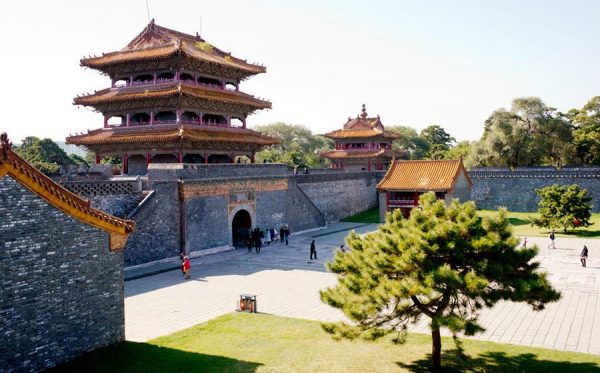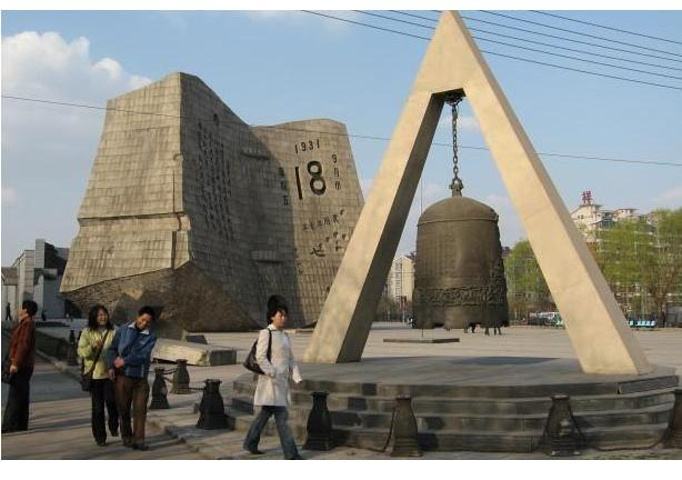
Though not as well-known as Beijing or Shanghai, Shenyang has one of the most colourful histories of any city in China. As the capital of Liaoning province and the largest city in the Northeast, it represents the cultural and economic centre of a region once known as Manchuria. Archaeological findings have shown that the area surrounding the city was populated over 8,000 years ago and the remains of a Neolithic society, known as the Xinle culture, take pride of place in the city’s Xinle Site Museum. By 300 BC, the city had been firmly established, but it wouldn’t reach its full potential until many years later.
In 1625, the Manchu leader Nurhaci captured Shenyang and made it his administrative centre. By 1626, he had already begun constructing an imperial palace in the city and, in 1634, he renamed it “Mukden” in Manchu or “Shengjing” in Chinese, which meant “rising capital”. Built to resemble the Forbidden City, the Mukden Palace boasts over 300 luxuriously decorated rooms and 20 gardens, demonstrating the power and grandeur of the Manchu regime. By the early 17th century, the Manchu controlled all of northeast China and began plotting to conquer the reigning Ming Dynasty (1368-1644).
In 1636, Nurhaci’s son Hong Taiji founded the Qing Dynasty (1644-1912), thus formally announcing his intention to become Emperor. Though he technically never succeeded, the Manchu did supplant the Ming Dynasty and, in 1644, his son took the throne as the Shunzhi Emperor. They transferred their imperial capital to Beijing, but Shenyang maintained its prestige since the tomb complexes of both Nurhaci and Hong Taiji were located there.
Alongside the Mukden Palace, these tombs, known as the Fuling Tomb and the Zhaoling Tomb respectively, were collectively designated a UNESCO World Heritage Site in 2004. All of these historic sites are unique in that their architecture is a perfect intermingling of traditional Han Chinese and Manchurian styles. While these are undoubtedly the most popular attractions in Shenyang, there’s definitely more to the city than lavish palaces and dusty mausoleums!
For example, the city is home to a variety of museums, such as the Liaoning Provincial Museum, the Shenyang Steam Locomotive Museum, and the 9.18 Museum. The latter is shaped to look like a giant calendar and is entirely dedicated to the Mukden Incident. On September 18th 1931, a small quantity of dynamite was detonated close to a railway line near Shenyang that was owned by the Japanese South Manchuria Railway Company. The blast was largely believed to have been orchestrated by the Imperial Japanese Army, who accused Chinese dissidents of the act and used it as an excuse to launch a full invasion of the city.

Using Shenyang as their base, they went on to occupy the rest of northeast China and established the puppet state of Manchukuo. It is widely regarded as one of the most unpleasant chapters in Chinese history, and the museum unflinchingly documents the events and war crimes that took place from the Mukden Incident onwards. While it’s not for the faint of heart, it provides an invaluable window into the country’s modern history.
Don’t be disheartened, not all of the sites in the city are quite so sombre! At the centre of Heping District, Zhongshan Square boasts one of the largest statues of Chairman Mao, and is tantalisingly close to the city’s Korea Town. Thanks to its proximity to Korea, many ethnic Koreans live in Shenyang and this vibrant area, lined with golden gingko trees, is the ideal place to sample some delicious Korean barbecue or soak in the city’s nightlife.
If you’re looking to escape the raucous crowds, the Shenyang International Expo Garden is a refreshing slice of nature in this bustling metropolis. It was once the Shenyang Botanical Garden but, after hosting the 2006 International Horticultural Exposition, it was expanded to include international themed gardens, amusement park rides, and the magnificent Lily Tower, a massive structure shaped like its namesake flower. In fact, the city itself is renowned for its numerous green spaces, including six large parks and eighteen riverside gardens. So, if you’re looking for a real urban jungle, Shenyang is the place for you!